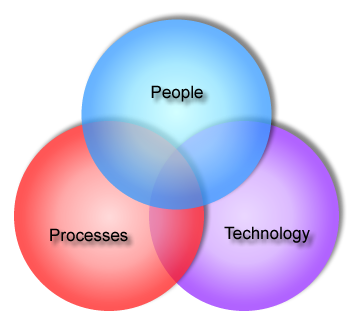 Although I write a lot of posts about being customer-centric, it’s important to remember that customers form only part of the corporate relationships agenda. Another category of important relationships are partners.
Although I write a lot of posts about being customer-centric, it’s important to remember that customers form only part of the corporate relationships agenda. Another category of important relationships are partners.
And partners will only become more important in the Digital Society.
A recent article by John Hagel III and Marc Singer entitled Unbundling the Corporation hit home just how the importance of partners will grow within the Digital Society. The article appeared in the McKinsey Quarterly.
Hagel and Singer wrote,
[C]hanges in interaction costs can cause entire industries to reorganize rapidly and dramatically. Today, that fact should give all managers pause, for the world economy is on the verge of a broad, systemic reduction in interaction costs. Electronic networks, combined with powerful PCs, are permitting companies to communicate and exchange data far more quickly and cheaply than ever before. As business interactions move on to electronic networks such as the Internet, basic assumptions about corporate organization will be overturned. Activities that companies have always believed to be central to their businesses will suddenly be offered by new, specialized competitors that can do those activities better, faster, and more efficiently.
What this means is that we can expect to see more companies strip back to core competencies and partnering with other companies to provide other supporting services. We already see plenty of examples of this in action. Consider Apple partnerships to develop TV innovations. And Hagel and Singer offer up examples in the pharmaceutical and newspaper industries.
Tips to foster collaboration
In order for inter-company partnerships to prosper, companies have to have a collaborative mindset. And the thing is, you can only do that from the inside out. Thus, if you fail to collaborate internally, expect to fail when it comes to doing it with partners.
How can you heighten collaboration within your company?
My mantra is people, process and technology -- and the big 3 are just as true to foster collaboration as any other corporate initiative. And you look at change in the order.

First is starts with a corporate culture that fosters collaboration and favors it over competition. That’s not to say all competition is bad but it recognizes there’s a difference between friendly competition versus pitting people against one another.
How can you tell if your company is a truly collaborative? One way is to look at how you share information. If employees hoard information, then they’re doing so to gain one-upmanship on others. That points to a competitive organization.
To move towards collaboration, you with hiring practices that seek out team players who love to collaborate. And for existing employees, promote training that will help them modify their competitive behaviors.
And remember, people will do what they’re paid to do. Thus, if your organization is designed to reward employees for collaboration, then that’s what they’ll focus on. Set part of their compensation based on how the organization as a whole performs so individual employees look beyond their departmental concerns.
After considering the people part of the equation, then you're ready to consider the process variable.
Do you make it easy for people to team together on projects?
Do your workflow processes make it easy to pool and share information as your corporate activities cross departmental boundaries?
The easier it is to share, the more likely people will do so.
Use technology to enable connectivity and sharing -- but be sure to make technology the slave of your people rather than make your people the slave of your processes and technology.
And as you move towards partnering with external organizations, ensure you also have good technology solutions to makes connectivity and information sharing easy to undertake with your partners as well.

